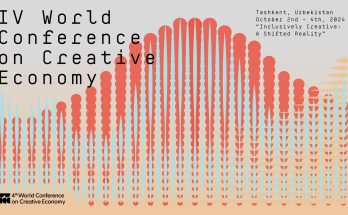 For those of us living in India, crossing over casually is a distant dream. Even though India and Pakistan were one over six decades ago, going to the other side “just like that” is now virtually unthinkable. Even a single-city, limited-time visa entails extensive paperwork. But the Swedes and the Danes live a different life. As tourists, some of us have enjoyed the benefits of Schengen visas, with most of Europe being a single visa zone. But imagine how it would be for the residents there, who can casually walk past borders – all in a day’s work. I encountered a slice of that kind of life during a recent trip to Copenhagen.
For those of us living in India, crossing over casually is a distant dream. Even though India and Pakistan were one over six decades ago, going to the other side “just like that” is now virtually unthinkable. Even a single-city, limited-time visa entails extensive paperwork. But the Swedes and the Danes live a different life. As tourists, some of us have enjoyed the benefits of Schengen visas, with most of Europe being a single visa zone. But imagine how it would be for the residents there, who can casually walk past borders – all in a day’s work. I encountered a slice of that kind of life during a recent trip to Copenhagen.
On the last day of my trip, when someone told me that the Swedish city of Malmo is right next-door, I felt a tad disappointed to be missing out on a visit to another country. I was thinking that if I had realised that, I would have kept one day for Sweden as well. But the dejection soon turned into elation when I was told that Sweden is just half an hour away, and even if I started post lunch, I could well be back in Denmark before night. And so, this incidental journey of sorts took shape.
Post a quick lunch, I ran for the nearest metro station to take a train to Malmo. There is also the road route which takes the same amount of time, but taking the train from Copenhagen to Malmo or vice-versa across the famous Oresund Bridge is the most popular option. The train departs either city’s central train station every 20 minutes, and the advantage here is a flexible schedule and a low price of $21 per person since one doesn’t have to pay the bridge toll, which the road travellers have to. The Oresund, by the way, is the longest combined road and rail bridge in Europe.
 The train journey is extremely comfortable and interesting. While you do encounter a motley crowd of students, professionals and tourists criss-crossing between Denmark and Sweden, the view of the sea outside the window is stunningly picturesque. Since it is easy and economical to travel between Denmark and Sweden, many Danes are buying homes in Sweden to take advantage of lower housing prices in Malmo and commuting to work in Denmark. On the other hand, many Swedes also come to Denmark to buy grocery and liquor since it’s a little cheaper that side.
The train journey is extremely comfortable and interesting. While you do encounter a motley crowd of students, professionals and tourists criss-crossing between Denmark and Sweden, the view of the sea outside the window is stunningly picturesque. Since it is easy and economical to travel between Denmark and Sweden, many Danes are buying homes in Sweden to take advantage of lower housing prices in Malmo and commuting to work in Denmark. On the other hand, many Swedes also come to Denmark to buy grocery and liquor since it’s a little cheaper that side.
Once you arrive in Malmo, the landscape changes. Leaving behind Copenhagen’s cobbled streets, gabled houses and colourful buildings, you have now entered the city of parks. Malmo is home to The King’s Park and the Castle Park: widely considered the country’s most beautiful parks, separated by a canal and linked by several bridges.
B ut parks are not all that Malmo has. Once you start walking by, and reach an area called Möllevångstorget, you can find exotic shops selling Asian and Middle-Eastern food items and several pubs and bars. The surrounding neighborhood is full of inexpensive Asian and Middle-Eastern shops, restaurants and grocery stores catering to the immigrant population, and others who are tired of mainstream commerce.
ut parks are not all that Malmo has. Once you start walking by, and reach an area called Möllevångstorget, you can find exotic shops selling Asian and Middle-Eastern food items and several pubs and bars. The surrounding neighborhood is full of inexpensive Asian and Middle-Eastern shops, restaurants and grocery stores catering to the immigrant population, and others who are tired of mainstream commerce.
The centre point of Malmo seems to be the waterfront area, with the hugely famous Turning Torso building visible from anywhere you may be standing. Completed in 2005, this 190 metre structure is, in fact, the tallest building in Scandinavia but has no commercial or touristy air around it. With mostly apartments with some offices, the Turning Torso has no observation deck or other sightseeing facilities, so it’s probably best to admire it from afar.
After a quick coffee at one of the many cafes in the waterfront area, I returned to the Malmo Central station to ensure I am back in Denmark for dinner. That was my shortest trip ever in a country.
Oresund: Bridging the Gap
 Oresund was inaugurated in 2000 by Queen Margrethe II of Denmark and King Carl XVI Gustaf of Sweden. As a symbolic gesture, Crown Prince Frederik of Denmark and Crown Princess Victoria of Sweden met midway across the bridge-tunnel in August 1999 to celebrate its completion. In 2007, almost 25 million people travelled over the Øresund Bridge: 15.2 million by car and bus and 9.6 million by train. By 2009, the figure had risen to 35.6 million by car, coach or train. In 2002, the bridge received the prestigious IABSE (International Association for Bridge and Structural Engineering) Outstanding Structure Award. But more than being a concrete marvel, this fastest and most comfortable passageway is a modern-day metaphor for bridging the cultural and geographical divides.
Oresund was inaugurated in 2000 by Queen Margrethe II of Denmark and King Carl XVI Gustaf of Sweden. As a symbolic gesture, Crown Prince Frederik of Denmark and Crown Princess Victoria of Sweden met midway across the bridge-tunnel in August 1999 to celebrate its completion. In 2007, almost 25 million people travelled over the Øresund Bridge: 15.2 million by car and bus and 9.6 million by train. By 2009, the figure had risen to 35.6 million by car, coach or train. In 2002, the bridge received the prestigious IABSE (International Association for Bridge and Structural Engineering) Outstanding Structure Award. But more than being a concrete marvel, this fastest and most comfortable passageway is a modern-day metaphor for bridging the cultural and geographical divides.
Author Profile
Latest entries
 CultureApril 1, 2014Border-crossing: Supper in Sweden, Dinner in Denmark
CultureApril 1, 2014Border-crossing: Supper in Sweden, Dinner in Denmark Books / PoetryOctober 3, 2013Unmasking honour killings in India
Books / PoetryOctober 3, 2013Unmasking honour killings in India CultureSeptember 20, 2013The Little Mermaid: 100 years of fairytale splendour
CultureSeptember 20, 2013The Little Mermaid: 100 years of fairytale splendour India and the WorldJuly 27, 2013Dubai Unbound: Tourism, economy bounce back; India bets on growth story
India and the WorldJuly 27, 2013Dubai Unbound: Tourism, economy bounce back; India bets on growth story







